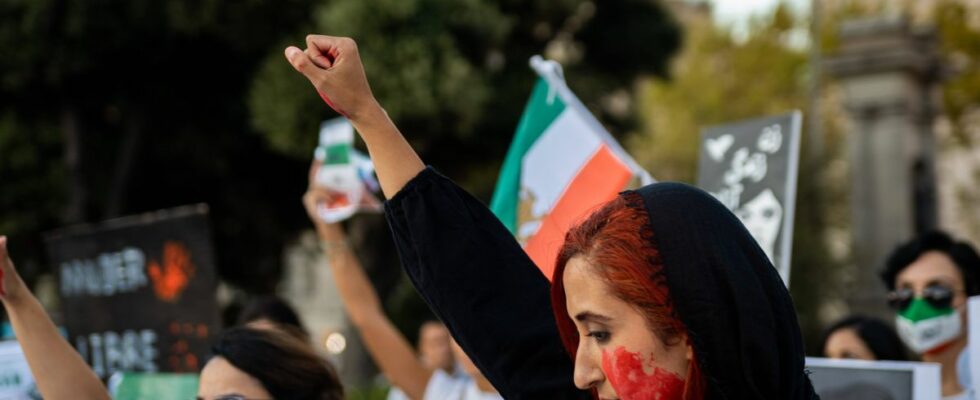They would be more than 800. In Iran, schoolgirls have been victims of poisoning in the last three months. But while the authorities have just opened an investigation, the number of victims could still increase. In recent days, new cases have been identified in the city of Pardis, near Tehran, where 35 young girls were transferred to hospital on Tuesday.
Other regions have been affected in recent weeks, including the holy city of Qom, about 100 kilometers from Tehran. After these multiple poisonings, the young schoolgirls felt various symptoms such as nausea, headaches, coughing, breathing difficulties or even heart palpitations. Some victims explain to the media Iran International having smelled a tangerine odor.
A mysterious case that comes after several months of revolts in Iran where women have taken a very important place in the claims. This raises some questions to which 20 minutes wished to respond.
Where does the information come from?
Since December, Iranian media have started to reveal certain cases of poisoning from December, that is to say three months after the beginning of the revolts in Iran. According to the Iranian branch of RFIa first alert was given on December 9 when the public relations department of the General Directorate of Education in Qom announced that about twenty girls had been admitted to hospital with several symptoms of lethargy, headaches throat and dizziness.
Then, a series of poisonings followed in the following weeks. At the same school in Qom first, at the Noor Conservatory, at the end of December. Other schools were then affected, such as in Tehran at the end of February, where 30 high school girls had to go to hospital after respiratory poisoning. Very quickly, the correlation between these different poisonings was no longer in doubt.
Has this ever happened in Iran?
In Iranian history, stories of poisoning are not commonplace. However, techniques of intimidation have already arisen over the centuries. The historian specializing in Iran Yves Bomati remembers, for example, the era of the Kadjars, a dynasty that reigned in Iran between the end of the 18th and the beginning of the 20th century. Two chancellors were poisoned with coffee, one inside the Shah’s palace, the other outside. Both politicians were reformers. “There is a kind of link between stories where we do not want to reform institutions that are favorable to some of the people who are in power. This is a bit like what is happening in Iran at the moment where young girls were at the head of the procession during the demonstrations”.
According to Iranian sociologist and political scientist Mahnaz Shirali, this story also echoes the vitriolic women for years in Iran. In 2014, for example, fifteen women were attacked with acid, in the name of respect for Islamic law. Same thing in 2006 when militiamen of the Supreme Guide (named Bassidjis) had thrown acid in the face of two women aged in their twenties.
Women in the spotlight
Even more recently, The media Iranwire revealed on Tuesday that men presented as members of the Islamic Revolutionary Guard Corps had visited girls’ schools to show them pornographic videos in the middle of class. According to the sociologist and researcher at the University of Paris quoted Azadeh Kian, it was once again a threat. “These are acts of intimidation against very mobilized young girls. The idea is to tell them ‘this is what happens if you keep protesting’”. Before adding: “It is a real Talibanization of Iranian society”.
Indeed, for several years, the Iranian regime has reigned by imposing terror. “As long as they could, the regime killed directly in prisons or in the streets. But there with the pressure from the international, it has become very difficult for them because everyone has their eyes fixed on Iran. They can’t kill officially, it’s now done incognito, ”said political scientist Mahnaz Shirali.
Insecurity and fear would also result in not having a single target, but several…especially women. “During the riots, they were particularly active, they were not afraid and were on the front of the stage. These methods serve to show them that even if they are not killed, revenge is possible.”
“Sweep away the concerns of families”
So who is hiding behind these poisonings? This Wednesday, Interior Minister Ahmad Vahidi announced that the authorities were still investigating the “possible responsible” for these poisonings. But for the moment, no arrests have been made and nothing proves according to him the use of a toxic substance. Iranian President Ebrahim Raisi instructed Interior Minister Ahmad Vahidi on Wednesday to “follow the case as quickly as possible” and to “inform” the public about the investigation in order to “sweep away the concerns of families,” according to the presidency website. Authorities say religious extremists may be responsible.
But for political scientist Mahnaz Shirali, these poisonings cannot “be the business of an ordinary criminal”. “Schools are targeted repeatedly, we can understand that it is a state crime that does not bear its name”. It is also probable, according to her, that the investigation will lead to nothing. “When women have been vitriolated for fifteen years, the investigation has never yielded anything,” regrets the specialist.
A transparent investigation requested by the company
Can the case be hushed up? This is what the Iranians are currently afraid of, and in new demonstrations they are calling for a “transparent investigation”. “We don’t want a dangerous school,” chanted the demonstrators. However, some elements still remain unclear in this investigation.
Near Radio Farda – antenna Liberty Radio – a source from a hospital in Qom reportedly recounted, for example, the presence of members of the intelligence branch of the Islamic Revolutionary Guard Corps (IRGC) at the hospital. “They take the children’s blood test results to their own lab. We don’t know what’s going on,” the source revealed.

